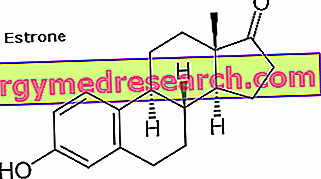Generality
Vasovagal syncope is a particular type of syncope that sees the involvement of the vagus nerve and, more precisely, an increase in vagal tone .

More specifically, vasovagal syncope belongs to the group of neuro-mediated syncopes. It is a transient loss of consciousness that can occur following different stimuli (emotional or orthostatic). It is considered as a benign phenomenon, since - as we will see in the course of the article - it is believed to represent a sort of defense mechanism put in place by the body in order to protect the heart from a condition of excessive work that is potentially dangerous .
Nevertheless, vasovagal syncope can frequently affect patients, affecting quality of life and leading to unintended consequences.
What is that
What is Vasovagal Syncope?
The vasovagal - or vaso-vagal, syncope that you write - is a type of neuro-mediated syncope that, as such, is characterized by a brief and transient loss of consciousness (generally, a few minutes). Often referred to by the term "vulgar" and generic "fainting", vasovagal syncope is considered to be a benign phenomenon that can occur in both children and adults.
The problem of vasovagal syncope appears to occur more frequently in patients of young age and its course is generally variable. In fact, during the life of each patient, the episodes may occur more or less frequently, varying from individual to individual, but in an unpredictable manner.
Types
Types of Vasovagal Syncope
The temporary loss of consciousness that characterizes vasovagal syncope can be essentially of two types: classical and non-classical. These types differ in the possibility of identifying the factors triggering the episode.
More in detail, in classical vasovagal syncope - in addition to the prodromal symptoms (see "Manifestations and Symptoms" chapter) - it is possible to identify which factor triggered the mechanism leading to the patient's loss of consciousness. This triggering is generally represented by emotional factors (intense emotions, severe pain, fright, etc.) or by factors of an orthostatic type (prolonged standing).
In non-classical vasovagal syncope, on the other hand, the episode of loss of consciousness occurs even in the absence of a trigger, or in the absence of an identifiable trigger.
Based on the data collected in the course of several studies, it seems that the classical form is the one that mostly involves patients at a young age; while the non-classical form appears to be more widespread among elderly patients.
Causes
What causes Vasovagal Syncope?
In truth, the pathophysiology of vasovagal syncope is still the subject of study and debate, since all the causes and mechanisms leading to the appearance of the episode of loss of consciousness have not yet been fully defined.
Nevertheless, it is possible to state that vasovagal syncope is characterized by a sudden lowering of blood pressure ( hypotension ) and a reduction in heart rate ( bradycardia ) attributable, respectively, to an inhibition of the sympathetic system and an increase in vagal tone . Because of these phenomena, the cardiac output, therefore, the cerebral perfusion is reduced (cerebral hypoperfusion) leading to the loss of consciousness.
In the field of vasovagal syncope, the above conditions generally occur in response to external factors or stimuli that act as a trigger for the appearance of the fainting episode. Not surprisingly, these factors are also called " triggers ", from the English " trigger " or " trigger ".
In detail, some examples of these "triggers" can be represented by:
- Strong emotions;
- Fear and excessive fear;
- Intense pain;
- Perception of particularly annoying or irritating sensations;
- Blood view;
- Prolonged orthostatism (ie, permanence in an orthostatic position for excessively long times).
Did you know that ...
Sometimes, even the administration of some drugs - such as, for example, the thiocolchicoside muscle relaxant - can favor the appearance of vasovagal syncope. In this type of situation, the syncope in question is considered as a side effect due to the administration of the drug.
Other possible factors that can predispose to the onset of vasovagal syncope are fatigue, hunger and emotional stress.
Vasovagal Syncope as a Defense Mechanism
Some studies have shown that classical vasovagal syncope is not to be considered as a disease, but rather as a characteristic of the individual, present not only in humans but also in animals (other mammals and vertebrates such as fish, birds, reptiles and amphibians), in which, however, there is no loss of consciousness even if the increased reflection of vagal tone manifests itself exactly as in men.
In light of the many studies conducted, it has been hypothesized that vasovagal syncope may in some way represent a sort of " defense mechanism " implemented by the body to protect the heart when this organ is working in unfavorable conditions that could damage it and cause damage to the entire body. The onset of vasovagal syncope - whose duration is, let us remember, very short - through the appearance of hypotension and bradycardia should therefore represent a kind of " pause " from the intense work of the heart, reducing oxygen consumption, improving the diastolic filling and coronary perfusion.
The non-classical vasovagal syncope that occurs mainly in elderly patients, on the other hand, is believed to be considered a disease attributable to the processes of degeneration of the nervous system that can occur in old age.
Manifestations and Symptoms
What are the manifestations and symptoms of Vasovagal Syncope?
As repeatedly stated, vasovagal syncope is characterized by a brief and temporary loss of consciousness characterized by hypotension and bradycardia.
The episode of vasovagal syncope, however, is usually preceded by a series of typical symptoms that allow the patient to sense the imminent loss of the senses. These are the so-called prodromal symptoms which generally consist of:
- Appearance of intense pallor;
- Cold and abundant sweating;
- Dizziness and vertigo;
- tinnitus;
- Progressive tiredness that usually starts from the upper limbs and then spreads to the whole body;
- Perception of heart rate acceleration;
- Tunnel vision;
- Localized pain in the sternal region;
- Gastrointestinal disorders;
- Altered perception of heat and / or cold.
If on one hand, the prodromal symptoms may represent a bell from the arms for the patient of the imminent episode of vasovagal syncope; on the other hand, it may happen that they do not occur in time to allow the user to get in a safe position (for example, sit down if you are in an upright position; pull over the car if you are driving, etc.). In such a situation, the loss of consciousness can give rise to falls or accidents, causing serious injuries to the patient.
Did you know that ...
In some cases, after the manifestation of prodromal symptoms, the loss of consciousness does not occur, but there is a slow recovery of normal conditions. In such situations, one speaks more properly of pre-syncope .
Consequences
What are the consequences of Vasovagal syncope?
As repeatedly stated in the article, vasovagal syncope is considered a benign phenomenon. However, in patients in whom episodes of unconsciousness occur frequently, the presence of this condition - albeit benign - can adversely affect the quality of life.
Because of the fear of the reappearance of new episodes, in fact, patients could change their life habits, for example, limiting or completely avoiding the driving of vehicles, reducing exits or even abandoning their use. Fear is further exacerbated by the fact that recurrences of vasovagal syncope - in addition to being quite frequent - are completely unpredictable . Added to this is the fact that, even when the prodromal symptoms occur, it is not certain that they will appear in time to allow the patient to react and put into practice any preventive maneuvers (see "Care and Prevention" chapter). In such situations, the step towards anxious and / or depressive syndromes is really short.
Diagnosis
How is Vasovagal Syncope Diagnosed?
To make a correct diagnosis of vasovagal syncope, the patient must provide the doctor with all the information in his possession regarding the episodes that occurred. In detail, the patient will have to report to the healthcare provider which symptoms he manifested before losing consciousness, recovery time and the area in which the syncope occurred.
In addition to the collection of anamnestic data and the objective examination of the patient, the doctor can use instrumental analysis and not to make a correct diagnosis, such as:
- Blood analysis;
- Electrocardiography;
- Echocardiography;
- Holter ECG;
- Pressure Holter;
- Encephalogram.
If desired, it is also possible to perform the tilt test . A particular type of test in which a syncope is provoked in the patient in order to discriminate the type. However, generally, vasovagal syncope can be correctly diagnosed even without the aid of such a test.
In fact, usually, classical vasovagal syncope is correctly diagnosed when the event triggering the episode (ie, the trigger) is associated with typical prodromal symptoms.
Care and Prevention
Treatments and Treatments Against the Vasovagal Syncope
Although there is no specific cure that can completely eliminate the risk of the onset of vasovagal syncope, it is possible to undertake various therapeutic strategies whose goal is to keep the problem under control, preventing the onset of the episode.
Patients who have experienced a single episode of vasovagal syncope, as well as patients not considered at risk, are generally not subjected to any treatment, but are instructed on possible preventive maneuvers to be put into practice should a new episode occur again .
In patients in whom vasovagal syncope occurs several times, however, it is possible to intervene through drug treatment or possibly through surgical treatment . However, the decision to carry out any type of treatment and the choice of the type of treatment to be used must be made by the doctor on an individual basis for each individual patient.
Pharmacological treatment
Although there is no real pharmacological treatment to eliminate vasovagal syncope, according to some, it may be useful to administer medicines based on midodrine, an active ingredient capable of exerting an anti-hypotensive action. The medicine should be taken for the patient's entire life, possibly taking a few breaks. In any case, the correct dosage must be established by the doctor.
In some circumstances beta-blocker drugs have also been used, but from the studies conducted on the subject, their effectiveness has not been confirmed.
Surgical treatment
Surgical treatment involves the implantation of a peacemaker in order to regulate and normalize the heartbeat which in episodes of vasovagal syncope tends to decrease. However, this treatment does not intervene on hypotension, another characteristic aspect of the syncope in question. Furthermore, surgical treatment, in addition to not being decisive, cannot be practiced on all patients.
Prevention of Vasovagal Syncope Episodes
Prevention plays a key role in the management of vasovagal syncope. In fact, after the first episode, it is the duty of doctors to instruct patients on the behaviors to be implemented in the event of a new and imminent episode of vasovagal syncope.
Recognizing Prodromal Symptoms
First of all, it is essential that patients are able to recognize the prodromal symptoms, so that when they appear they can implement the preventive measures that will be taught to them. Generally, having already tried one or more times, the recognition of the symptomatology in question is quite simple.
Avoid the Factors that Trigger Vasovagal Syncope
After the first episode of vasovagal syncope, patients must be instructed in order to be able to recognize, and therefore avoid, the factors (triggers) capable of triggering syncope.
Physical maneuvers
The preventive measures that can be put into practice when one realizes that one is in the phase preceding a vasovagal syncope consist of a series of physical maneuvers, more properly defined as isometric compression exercises .

These exercises are able to promote an increase in blood pressure, avoiding the loss of consciousness characteristic of vasovagal syncope. More in detail, there are three isometric compression exercises that can be performed:
- Hand grip ( hand grip / grip): consists of the voluntary contraction, with maximum strength, of a rubber ball (having a diameter of about 5-6 cm) in the dominant hand for the maximum tolerated time, or until disappearance of prodromal symptoms.
- Arm tensing (arm tension): consists in obtaining the maximum isometric toleration of the two arms. To do this, it is necessary to hook one hand to the other, keeping your hands in front of you and simultaneously pulling outward for the maximum tolerated time, or until the symptoms are completely resolved.
- Leg crossing : it consists in crossing the legs by contracting the muscles of the latter and the muscles of the abdomen for the maximum tolerated time, or until the symptoms disappear.
What to do when preventive measures cannot be implemented
In the event that it is not possible to implement the preventive measures mentioned above, as well as in the event that it is too late to perform the aforementioned exercises, it is necessary to lie down immediately on the floor in a supine position, in order to limit the damage in case of loss of consciousness. If this is not possible, alternatively, you can sit on the floor with your head between your knees .
In any case, for any information about the preventive measures to be put into practice and the behaviors to be adopted in case of imminent vasovagal syncope, it is necessary to ask the doctor for advice.



